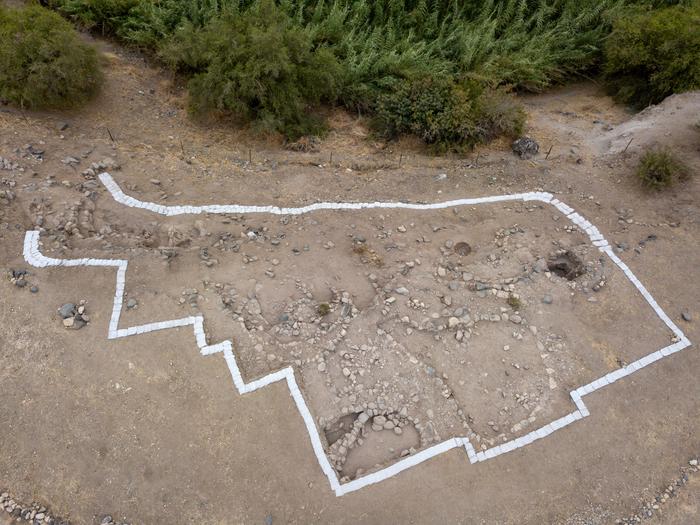Recent research spearheaded by scholars from the Institute of Archaeology at the Hebrew University pushes the boundaries of our understanding of early architectural practices in the Near East. The study, titled "A computational perspective on the dynamics of early architecture", delineates a pioneering computational approach that scrutinizes various architectural remains from significant sites across the Mediterranean and Jordan Valley. Through their innovative techniques, researchers challenge the established perspective of architectural evolution, particularly the simplistic transition from circular to square structures during the Neolithic era.
The traditional narrative regarding Neolithic architecture has often been characterized by a straightforward progression, wherein round structures evolve directly into rectangular forms, signifying a linear advancement in building techniques. However, this study uncovers a tapestry of architectural complexity, suggesting that societal shifts influenced these developments far earlier than previously recognized. Employing sophisticated computational modeling, the researchers have unraveled a wealth of data concerning architectural designs, enabling a more nuanced understanding of early construction practices.
What sets this study apart is its application of quantitatively rigorous methodologies to analyze a rich dataset of architectural forms. The research encompassed a detailed survey of 118 structures from 23 distinct archaeological sites, dating back to the Natufian culture, approximately 15,000 to 8,500 years ago. By digitizing the outlines of these buildings and applying computational tools, the researchers were able to evaluate various geometrical aspects, such as the orientation of normal vectors and the measurement of minimum angles. This meticulous approach has revealed that right angles—previously deemed exclusive to later architectural phases—were already in existence during the Natufian period.
Moreover, the study illustrates the significant variability in architectural shapes during the Natufian and early Neolithic periods, a reflection of the lack of standardized building codes or practices. Such diversity showcases a period of experimentation in building methodologies, wherein early societies demonstrated a remarkable degree of technological ingenuity. In contrast, as time progressed into the later Neolithic, a convergence towards standardized architectural forms became evident, indicating the development of established conventions and practices.
The impact of these findings extends beyond mere architectural analysis; they have profound implications for our understanding of social dynamics, economic strategies, and the very fabric of early settlement life. As permanent structures began to emerge, communities likely experienced changes in social organization and demographic patterns, necessitating a deeper examination of how building practices influenced daily life and community structures. The demographic shifts that accompanied the rise of agricultural economies may well correlate with the architectural innovations uncovered in this study.
This research exemplifies a burgeoning trend in archaeological studies: the integration of computational analysis to uncover underlying patterns that conventional qualitative assessments often overlook. By embracing new technologies, researchers can extract a wealth of information from architectural data, allowing for a deeper comprehension of the complexities inherent in early human societies. The adoption of these methodologies signifies an important step towards fostering interdisciplinary collaboration within the fields of archaeology, anthropology, and computational sciences.
The researchers emphasized that the variability and sophistication present in early architecture should be recognized as indicators of technological advancement, rather than merely symbols of the progression from primitive to complex forms. This perspective heralds a paradigm shift in how we interpret the evolution of human settlements, urging scholars to reconsider entrenched narratives that often undervalue ancient ingenuity.
Furthermore, the research sheds light on the role of architecture as a silent witness to the socio-economic transformations that took place in the Levant region. The principles governing architectural practices reflect the broader changes experienced by these societies, showcasing how the ancient builders were not merely constructing shelters but also articulating their identity and cultural narratives through their architectural choices.
As the public attunes to the rich historical significance embedded within these structures, this study serves as a reminder of the importance of preserving and studying our archaeological heritage. The new insights gained through this computational lens foster a greater appreciation for the achievements of early civilizations and the intricacies of human development.
In summary, this transformative approach to analyzing early architecture not only revises long-held assumptions about Neolithic structures but also elevates the conversation around how we view architectural history. As the researchers continue to refine their methodologies and broaden their datasets, the potential for even greater discoveries remains boundless. Embracing technology within the realm of archaeological inquiry redefines our interaction with the past, creating pathways for understanding that transcend conventional boundaries.
As archaeological technology advances, the potential for interdisciplinary research becomes crucial. The close collaboration between computer scientists, architects, and archaeologists not only enriches our comprehension of ancient societies but also promotes the relevance of modern techniques in revealing historical complexities. Ultimately, the insights gained through such collaborative efforts will continue to shape the future discourse surrounding architectural history.
This vital research marks a significant milestone in the ongoing exploration of early architecture and its implications for understanding the complexities of human development. It showcases the power of computational analysis in reshaping historical narratives, ensuring that the legacy of early builders is appreciated for its depth and ingenuity.
Subject of Research: Not applicable
Article Title: A computational perspective on the dynamics of early architecture
News Publication Date: 21-Nov-2024
Web References: DOI link
References: Not available
Image Credits: Naftali Hilger
Keywords: Archaeology, Technological advances, Early architecture, Social dynamics, Computational methods, Neolithic period, Settlement patterns




